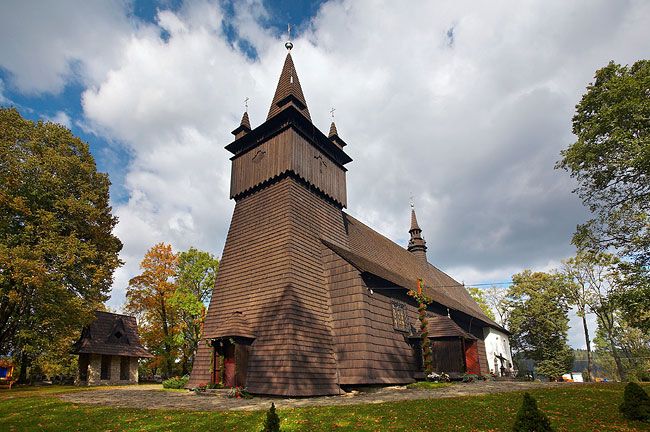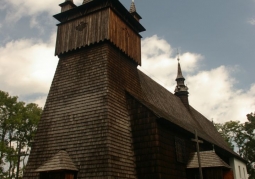The church John the Baptist - Orawka
No weather data
0.0 /5
Number of ratings: 0
Address: Orawka 65 , 34-480 Orawka
Historic parish church in Orawka, Lesser Poland Province. One of the points of the wooden architecture trail of the Lesser Poland Voivodeship belonging to the parish of St. John the Baptist in Orawka. The creation of the church dates back to 1651-1656, built on the initiative of Fr. Jan Szczechowicz. Is the oldest temple and the first parish of Polish Orava and the oldest wooden temple of Upper Orava. It is surrounded by trees and surrounded by a wall within which a cemetery is located. A wooden, single-nave church with a tower was built in a log construction; the roof and walls are covered with shingles. The elongated presbytery, polygonally closed, is narrower than the nave. A sacristy adjoins it from the north and a stone chapel of Our Lady of Sorrows, erected in 1728, from the east. A wooden porch is located on the south side of the nave. The church tower with sloping walls is topped with a room and a pyramidal helmet with four corner towers. The interior of the church and some of its furnishings were covered with figural and ornamental polychrome in the second half. XVII century and in 1711. The concept of the interior was designed by priest Orawki, priest Jan Szczechowicz. Polychrome depicts scenes from the life of St. John the Baptist, medallions with Christ and the apostles, images of saints worshiped in Hungary and coats of arms of people related to the history of Orava: emperor Ferdinand III Habsburg, archbishop Jerzy Lippay de Zongor and Moniaki. Scenes illustrating the Ten Commandments have been painted on the windowsill of the choir. On the rainbow beam there is the baroque group of the Crucifixion and inscriptions (one of them is the Polish text of the passion song). The late Baroque main and two side altars and stalls were made in the first half 18th century. The chapel also has Stations of the Cross from 1857 by Szczepan Sitarski.
Komentarze
No results
Nearby places
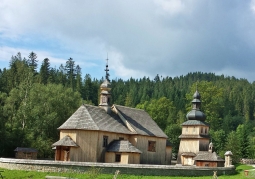
Museum - Orava Ethnographic Park - Zubrzyca Górna
Category: Open-air museumsThe regional open-air museum created in 1937, was officially opened in 1955 in Zubrzyca Górna. The Orava Ethnographic Park presents the history, architecture, material, social and spiritual culture of the Upper Orava...
9 km
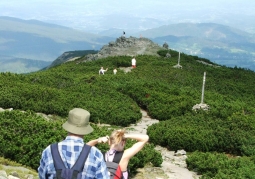
Babia Góra - Babia Góra National Park
Category: Peaks and valleysBabia Góra is a mountain massif located in the Babiogórski Range belonging to the Żywiec Beskids in the Western Beskids. The highest peak is Diablak (1725 m), often also called Babia Góra, as the whole massif. It is...
16 km
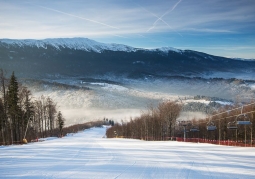
Mosorny Groń Tourist and Ski Resort - Zawoja
Category: Ski resortsThe complex includes: - a 4-person Poma chairlift with a length of 1,312 m and a capacity of 2,400 people per hour (travel speed - 2.5 m / s, travel time - 10 minutes), - a plate lift with a length of 325 m, - for...
17 km
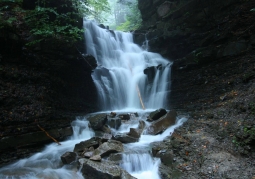
Mosorny Potok - Zawoja
Category: Lakes, springs, waterfallsMountain stream in the Żywiec Beskids (Police Range), located in the town of Zawoja, flowing through the Mosorne estate, flowing down the slopes of the Mosorny Gronia massif, fed with waters from many small streams,...
18 km
Nearby places

Museum - Orava Ethnographic Park - Zubrzyca Górna
Category: Open-air museumsThe regional open-air museum created in 1937, was officially opened in 1955 in Zubrzyca Górna. The Orava Ethnographic Park presents the history, architecture, material, social and spiritual culture of the Upper Orava...
9 km

Babia Góra - Babia Góra National Park
Category: Peaks and valleysBabia Góra is a mountain massif located in the Babiogórski Range belonging to the Żywiec Beskids in the Western Beskids. The highest peak is Diablak (1725 m), often also called Babia Góra, as the whole massif. It is...
16 km

Mosorny Groń Tourist and Ski Resort - Zawoja
Category: Ski resortsThe complex includes: - a 4-person Poma chairlift with a length of 1,312 m and a capacity of 2,400 people per hour (travel speed - 2.5 m / s, travel time - 10 minutes), - a plate lift with a length of 325 m, - for...
17 km

Mosorny Potok - Zawoja
Category: Lakes, springs, waterfallsMountain stream in the Żywiec Beskids (Police Range), located in the town of Zawoja, flowing through the Mosorne estate, flowing down the slopes of the Mosorny Gronia massif, fed with waters from many small streams,...
18 km
